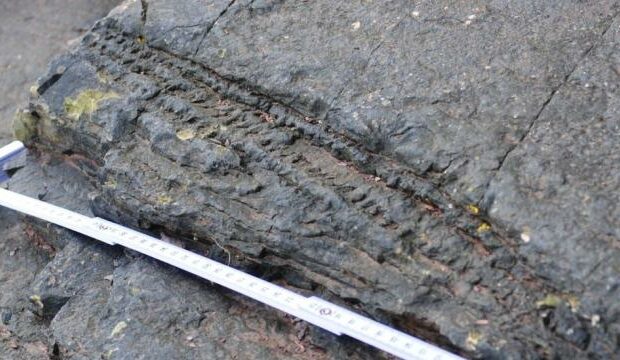On the UK’s north coast in Devon and Somerset, scientists have found fragments of the planet’s oldest fossil forest. Around 390 million years ago, the trees are believed to have grown as a part of a vast forest that covered the east coast of the continent known as the Old Red Sandstone, which was then a part of Europe.
As a result, the Somerset forest is 4–5 million years older than the previous American record holder, Cairo, New York.
The fossils were found by Cambridge University researchers and analyzed at Cardiff University. They depict little branches and unfinished trunks of a unique kind of tree known as cladoxylopsids, which may reach up to two meters in length.
The scientists found that before more contemporary woody trees appeared about 385 million years ago, cladoxylopsids dominated terrestrial ecosystems for a period of roughly 5 million years.
Their research, published in the Journal of the Geological Society, sheds new light on how trees evolved and the profound influence they had on the development of the modern world.
“These Calamophyton trees are the oldest fossil trees ever found in Britain and represent an as yet missing part of our vegetational history,” stated Dr. Christopher Berry, a senior lecturer at Cardiff University’s School of Earth and Environmental Sciences, who identified the fossils.
“So far, fossil forests—where tree bases are preserved in their original habitat—have only been found in New York State at Cairo and Gilboa, which date back to roughly 385 million years ago.
“Although the area of rock exposure is limited and dangerous to access, our new discovery is the oldest clear example of such a geological phenomenon known to date and it speaks directly to the ecology of the oldest forests 390 million years ago.”
Though they were unrelated to the types of trees that are common on Earth today, the Calamophyton initially resembled palm trees.
Their trunks were not solid wood, but rather hollow in the middle, encircled by a ring of woody supporting strands. Hundreds of twig-like things covered its branches in place of leaves.
In addition, the trees were far smaller than their progeny, growing to a height of only two to four meters. As they matured, they lost their lower branches and left behind a large amount of plant litter, which provided sustenance for invertebrates on the forest floor.
In addition, the scientists discovered evidence of the tree bases and their fallen trunks, which revealed for the first time the living trees’ spacing and environmental context.
“The shape and forms of these structures taken together strongly suggest that these the Calamophyton were standing alongside a raised bank beside a small river channel.” Dr. Berry continued.
“I was able to identify the tree trunks based on 30 years studying these types of fossils and particularly having worked on the best and most complete specimens of Calamophyton from Belgium and Germany where they are well known but relatively rare.”
“Nevertheless, it was a bit of a shock. Having traveled the world in search of the earliest forests, it is amazing to know that you can see the localities from here on the South Wales coast.”
The research believes that during the Devonian period, when Africa and Europe collided, the North Devon and Somerset site was probably much closer to Belgium and Germany. Later, during the Carboniferous period, during a period of crustal compression and faulting, it was moved over a massive geological fault.
First author of the paper Professor Neil Davies of the Department of Earth Sciences at Cambridge University stated: “Life on Earth underwent a profound shift during the Devonian epoch. Though little is known about the very earliest forests, it also altered the way that water and land interacted because trees and other plants stabilized silt through their root systems.
“The evidence contained in these fossils preserves a key stage in Earth’s development, when rivers started to operate in a fundamentally different way than they had before, becoming the great erosive force they are today.”
“People sometimes think that British rocks have been looked at enough, but this shows that revisiting them can yield important new discoveries.”








